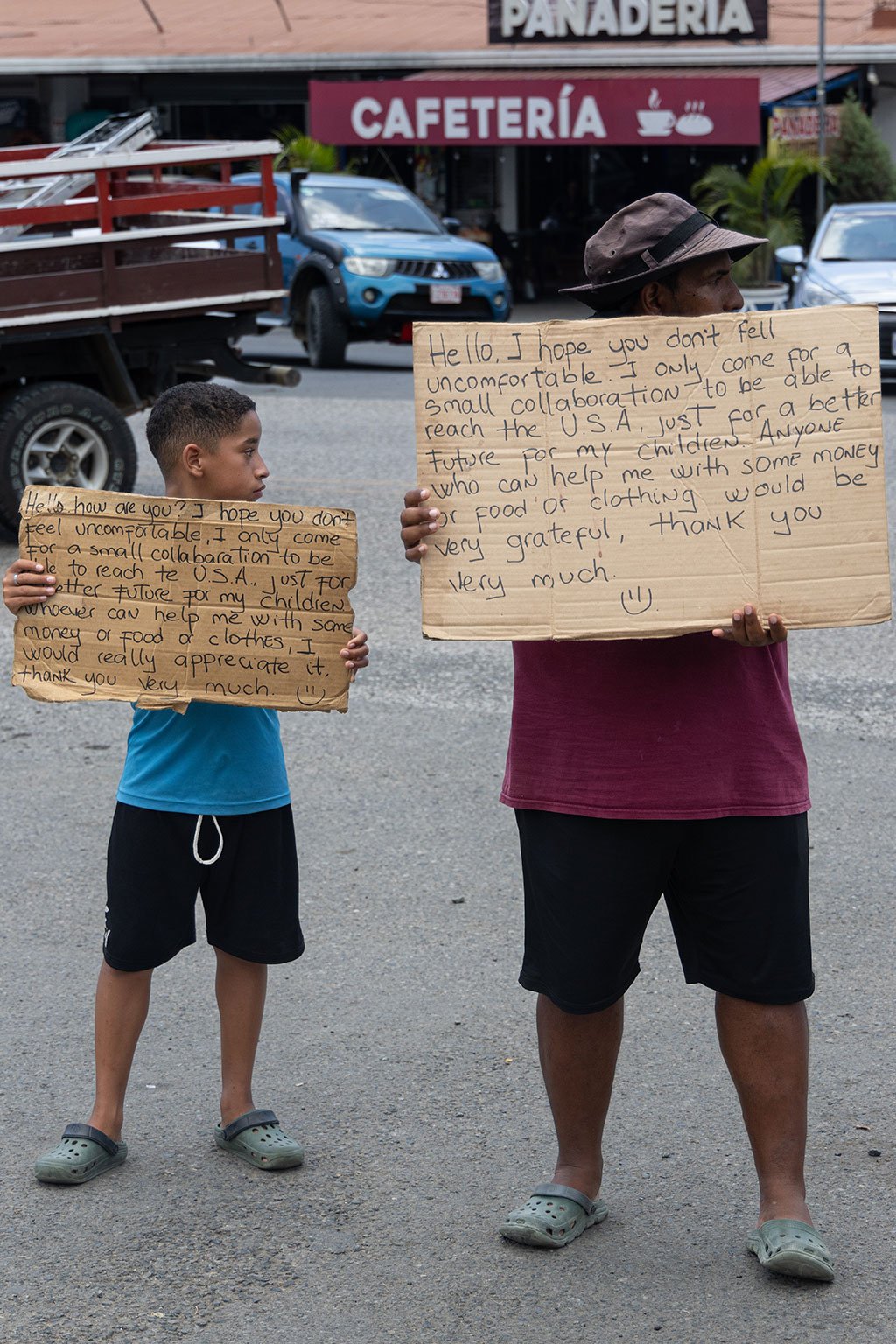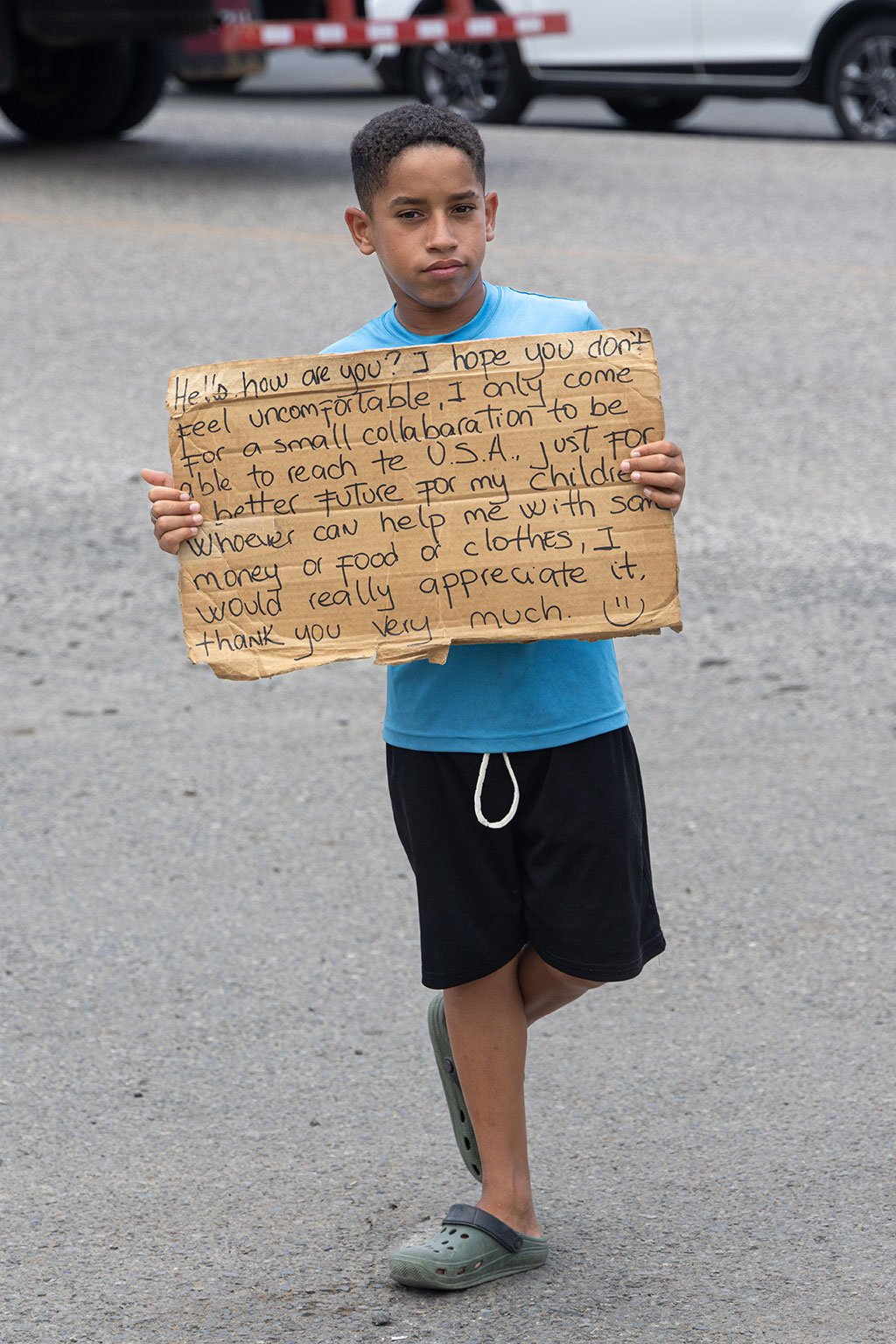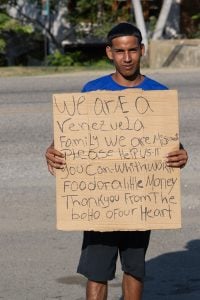2 brothers seek better opportunities in the U.S.
Two migrants who received a hot meal at the bus station were Juan Camilo Orjuela Patiño, 23, and Juan Miguel Orjuela Patiño, 26, brothers from Colombia. By the time they arrived at the Uvita bus terminal, they had been traveling for a week. They weren’t part of the official bus passengers from CATEM to Nicaragua but showed up on their own from Panama. They said they were trying to move fast, avoid the authorities and reach the U.S. as soon as possible.
“There’s a lot of people that leave the shelter because it’s very expensive. For people that cross the Darién, it’s very expensive,” said Juan Camilo. “Just to pass, it’s $160; you get to a shelter, it’s another $60; another center and it’s an additional $80. Another $40 here and $40 there and so on. It’s a lot of money.”
The brothers are from Valle del Cauca and began their journey by sea in Buenaventura, the largest seaport in Colombia. The brothers didn’t have to cross the Darién on foot. Instead, they paid for a boat to bring them to Panama. Fearing crossing the Darién, they said they were lucky enough to have passports and the knowledge of how to bypass the jungle.
Juan Camilo is a carpenter who makes furniture, doors, cabinets and houses. Juan Miguel is a trained heavy equipment operator and drives backhoes, forklifts and excavators. Their goal, they said, was to make it to Orlando, Florida, for work.
Their mission was to traverse Costa Rica in a single day, paying the $15 commercial bus fare from Uvita to the capital, San Jose, and from there to get a bus to the border with Nicaragua.
“If they [migration officials] caught us here, they would fine us $1,000 and take us right back to the border,” Juan Camilo Orjuela Patiño. “So we are going incognito.”
The brothers said there’s little economic opportunity where they’re from, due in part to the immense pressure from the mass migration of Venezuelans into Colombia. According to IOM, 2.8 million Venezuelans were living in Colombia as of January 2024.
“For example, I’m a carpenter — if you say build me a kitchen, and I quote you $1,000, and out of curiosity you ask a Venezuelan, and he says he’ll do it for $500, who would you prefer to do the job?” Juan Camilo said. “There are so many Venezuelans you don’t even know who is Colombian.”
According to the brothers, they come from an area in Colombia where you can’t trust anyone, a place that is controlled by armed guerillas, that’s very violent and corrupt. This is partly why they feared going to CATEM, traveling with other migrants or taking the official buses.
“People are deceitful. I’m scared that they will deport us,” Juan Camilo said.










